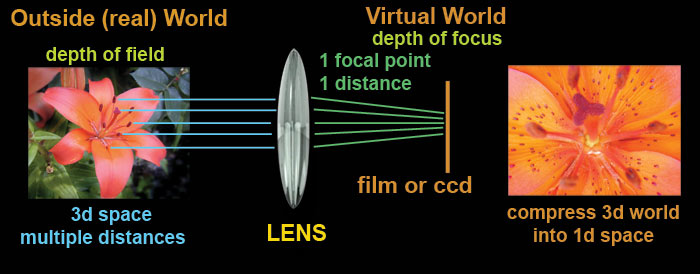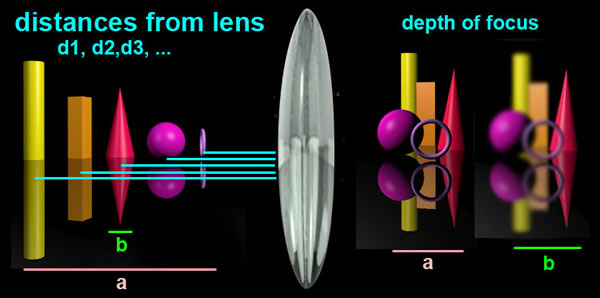|
In the real world objects are 3 dimensional. They have depth, and they may be located at different distances from the viewer. Photography must provide a means to convert 3-dimensional information on to a 2 dimensional surface (film or ccd). Something in the 3d world is "imaged" through a lens and the result is focused on to a flat surface. If you consider the way a lens works, this is not intuitively possible. A symmetrical convex lens that is some distance from an object will focus the object at the same distance behind the lens. The math changes when the lens has multiple elements (multiple lenses) and this configuration is called a compound lens. We are going to keep the discussion simple here, and avoid the variations that are produced in compound lenses. The concepts are still true although the geometry changes.
In the diagram below we see a series of 5 objects (to the left) at different distances form the lens. Two possible resultant images, as the lens views the objects, are shown on the right. The first image (a) illustrates what the image would look like if there is good "depth of focus". All of the objects appear sharp in this image. The depth of focus is represented by the reddish bar.
The second image (b) results with limited "depth of focus", and here only the red cone is in-focus with the objects in front and behind the cone being out of focus. This is limited depth of focus. This is more likely the image that an "un-aided" lens would produce.
|

